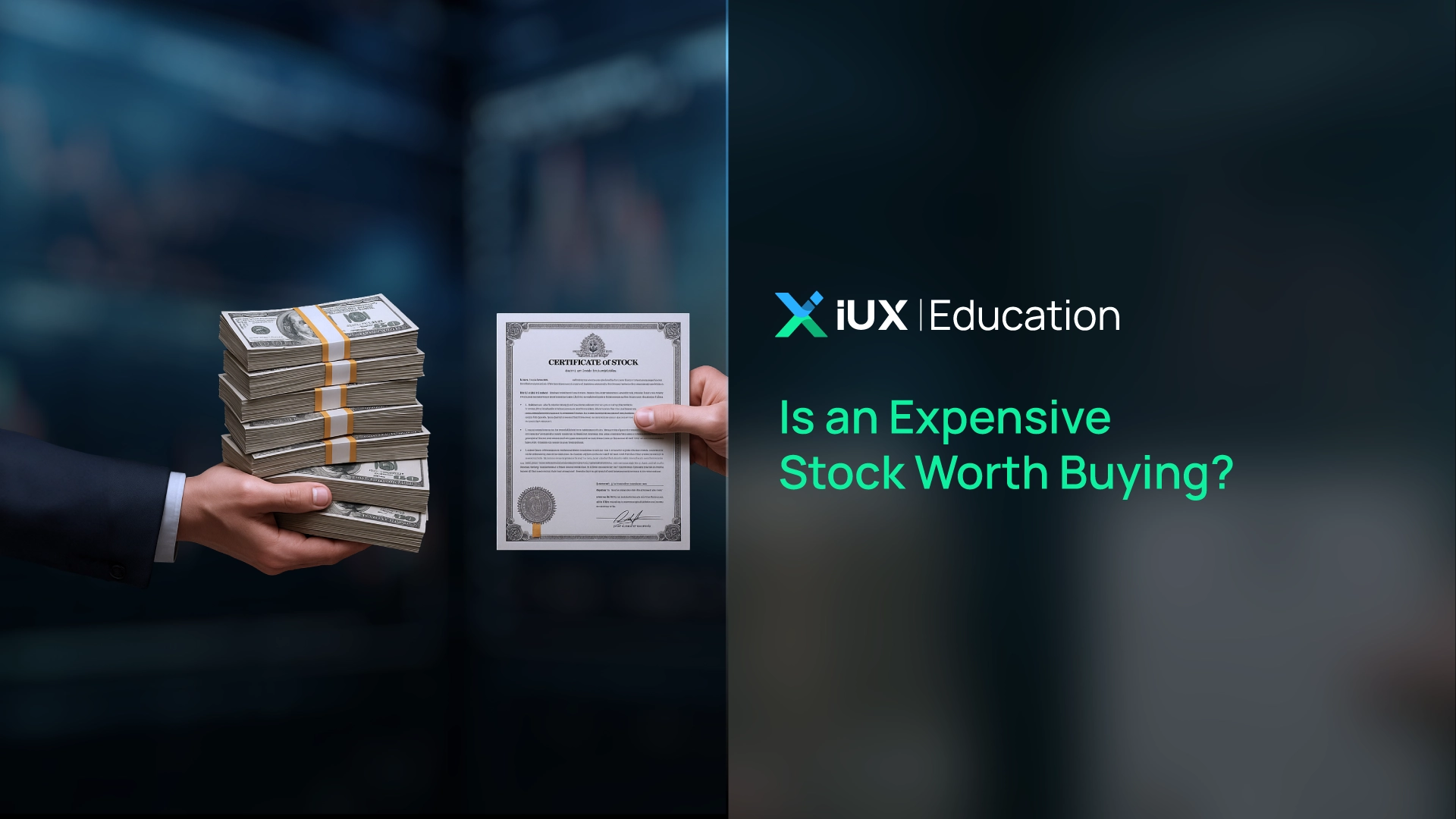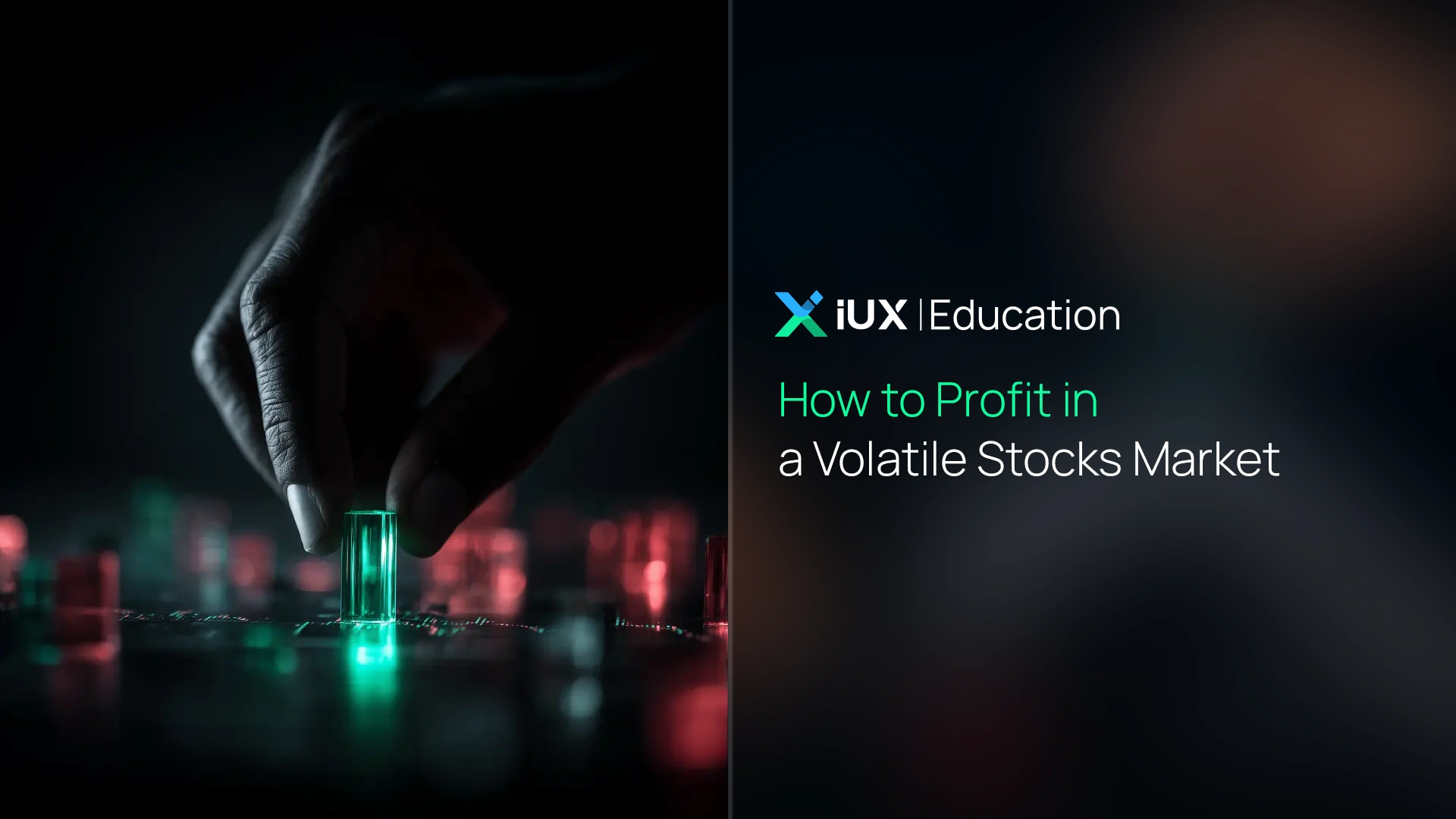CFDs are complex instruments and come with a high risk of losing money rapidly due to leverage. 76% of retail investor accounts lose money when trading CFDs with this provider. You should consider whether you understand how CFDs work and whether you can afford to take the high risk of losing your money.
CFDs are complex instruments and come with a high risk of losing money rapidly due to leverage. 76% of retail investor accounts lose money when trading CFDs with this provider. You should consider whether you understand how CFDs work and whether you can afford to take the high risk of losing your money.

Is an Expensive Stock Worth Buying?
As you scan the stock market, you may notice certain stocks with extraordinarily high share prices. At first glance, it might seem logical to assume that these high-priced stocks must be of exceptional quality, implying stability, superior growth prospects, or robust market positions.
But is the price tag of a stock really an indicator of its true value or investment potential? This article will unpack the factors that make a stock expensive, debunk common misconceptions about price and quality, and provide an advanced approach to determining whether such stocks are genuinely worth their elevated valuations.
What Makes a Stock "Expensive"?
Stock price alone does not offer sufficient insight into a company’s intrinsic value. A stock’s high price reflects only what investors are willing to pay for it at that moment, based on factors like demand, market sentiment, and supply limitations (especially relevant for stocks with low float).
Thus, an expensive stock could be the result of structural or market factors that have little to do with the company's actual financial health. A more meaningful metric than price per share is market capitalization—the total market value of a company’s outstanding shares.
Market cap helps investors understand a company’s size and value in the context of its industry. For instance, while Berkshire Hathaway (BRK.A) has a towering share price above $600,000, its valuation reflects a massive and stable enterprise with a diversified portfolio.
Conversely, stocks with lower prices may still have high market caps, as seen with Tesla (TSLA), due to extensive outstanding shares. This distinction underscores why price alone is not a proxy for value.
2024 Tesla Model 3 | Cars.com photo by Christian Lantry
Do High-Priced Stocks Indicate Quality?
The association between high-priced stocks and quality can be misleading. Although some high-priced stocks are backed by robust fundamentals, others may simply reflect investor enthusiasm or speculative demand.
Historical precedent and sector dynamics often play roles as well. For example, Berkshire Hathaway’s Class A shares maintain high value due to the company's unparalleled track record and Warren Buffett’s management, both of which have garnered long-term investor trust.
In contrast, NVR Inc., a home construction company, trades at nearly $10,000 per share despite its exposure to cyclical market risks that do not offer the same predictability as some tech or consumer goods stocks.
Moreover, there’s the psychological impact of high prices creating a “prestige” effect, which can spur demand irrespective of fundamentals. This can lead investors to overestimate the quality of high-priced stocks without a critical assessment of their underlying financial metrics.
| Tip: Don’t judge a stock by its price tag — focus on valuation metrics like P/E and EV/EBITDA to see if its worth truly matches its cost. |
Key Metrics for Evaluating Expensive Stocks
To determine if a high-priced stock is a prudent investment, investors should examine valuation metrics beyond mere price. Key among these is the Price-to-Earnings (P/E) ratio, which measures a company’s stock price relative to its earnings.
The P/E ratio can indicate whether a stock is overvalued or reflect high growth expectations within specific industries, particularly tech and biotech, where forward P/E ratios often diverge from conventional benchmarks.
Another useful tool is the Price-to-Sales (P/S) ratio, which provides a broader picture for companies with less consistent earnings. For high-growth sectors or early-stage tech companies, where profitability is still nascent, the P/S ratio can reveal whether investors are overpaying relative to the company’s actual revenue generation.
Investors might also consider metrics like Enterprise Value-to-EBITDA (EV/EBITDA), especially for capital-intensive industries. This ratio takes into account both debt and equity, offering a holistic view of a company's valuation relative to its cash flow and making it an ideal metric for comparing companies with different capital structures.
Photograph: Brian Snyder/Reuters
The Influence of Market Sentiment and Speculation
Market sentiment and investor psychology significantly impact high-priced stocks, sometimes inflating valuations beyond rational limits. This sentiment can be driven by narratives surrounding future growth potential, industry disruption, or charismatic leadership.
For instance, Tesla’s (TSLA) high valuation has been propelled as much by Elon Musk's vision for electric vehicles and renewable energy as by its current financial performance.
Understanding the broader economic context is essential when evaluating sentiment-driven stocks. In growth-oriented markets, investors are more likely to accept elevated valuations, whereas in contractionary periods, high-priced stocks may face sharp corrections as liquidity tightens, and risk tolerance diminishes.
Identifying Price Volatility in High-Priced Stocks
High-priced stocks are not immune to volatility. While their prices might seem to signify stability, they are subject to fluctuations driven by factors like economic data releases, interest rate changes, or geopolitical events.
Price corrections often reveal whether a stock's high price was justified by fundamentals or simply inflated by market hype.
In markets experiencing economic downturns, the appeal of traditionally high-priced stocks may diminish, and investors shift to value stocks with low P/E ratios or stocks offering reliable dividends. Monitoring these shifts allows investors to gauge when sentiment is steering prices rather than intrinsic value.
Advanced Strategies for Determining Overvaluation
Identifying overvaluation requires a sophisticated approach, combining macroeconomic insights with company-specific analysis. For instance, using the Discounted Cash Flow (DCF) model can help estimate a stock’s intrinsic value by projecting future cash flows and discounting them back to present value.
This model is particularly useful for high-priced stocks, as it assesses whether future earnings potential justifies the current price. Additionally, Relative Valuation methods, such as comparing the P/E or P/S ratios of similar companies within the same industry, offer a practical way to identify overvaluation.
Stocks trading at disproportionately high multiples relative to peers may be overvalued, especially if those multiples aren’t substantiated by superior growth rates, market share, or innovative advantage.
Alternatives for Accessing Expensive Stocks
For investors interested in high-priced stocks without the capital to buy full shares, alternatives like fractional shares and Exchange-Traded Funds (ETFs) offer viable solutions.
Fractional shares enable investors to own a portion of a stock, allowing for diversification without requiring the full share price. Meanwhile, ETFs that include high-priced stocks—such as tech-focused or blue-chip ETFs—provide exposure to these stocks with added diversification and lower entry costs.
High stock prices don’t mean you need a massive budget to start. IUX makes it easy for investors to access top-tier stocks with a stable and transparent system, offering low spreads and zero commissions.
This allows you to invest with confidence, armed with the right information, and adjust your strategies to align with your goals. Sign up IUX and start building a portfolio tailored to your objectives today!
Conclusion
Ultimately, the decision to invest in high-priced stocks should be driven by a comprehensive analysis of the company's financial health, growth prospects, and industry context. Although price is an important consideration, it should not be the sole determinant in evaluating a stock’s value.
Instead, advanced valuation techniques and a deep understanding of market sentiment can guide investors in discerning whether a high-priced stock is genuinely worth its elevated price.
In the dynamic environment of modern markets, assessing economic indicators, industry trends, and macroeconomic factors alongside company fundamentals enables investors to navigate the complexities of high-priced stocks with a greater degree of accuracy.
A data-driven approach that leverages a blend of quantitative metrics and qualitative insights will support more informed decision-making, helping investors avoid the pitfalls of overpriced stocks and capitalize on opportunities with sustainable growth potential.
💡FAQs
Q: Does a high stock price mean the company is more valuable?
A: Not necessarily. A high stock price doesn’t always reflect a company’s true worth. Market capitalization, not price per share, provides a clearer picture of overall value and scale.
Q: Why do some stocks remain expensive even during market downturns?
A: Certain companies maintain high prices due to strong fundamentals, brand reputation, or investor confidence in their long-term growth, even when broader market sentiment weakens.
Q: How can investors buy high-priced stocks without large capital?
A: Investors can use fractional shares or ETFs that include high-priced stocks, allowing them to gain exposure to premium companies while maintaining diversification and lower entry costs.
Note: This article is intended for preliminary educational purposes only and is not intended to provide investment guidance. Investors should conduct further research before making investment decisions.




